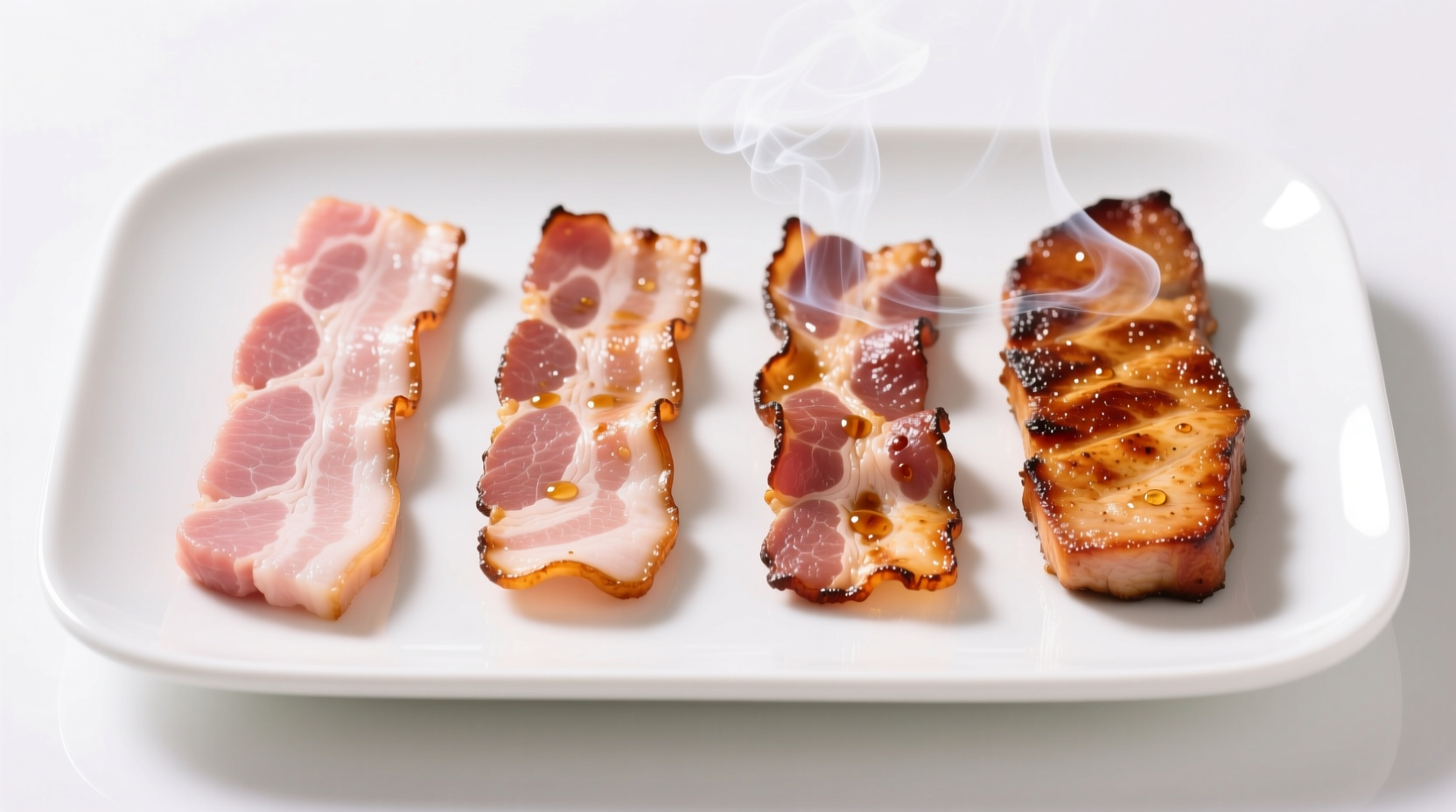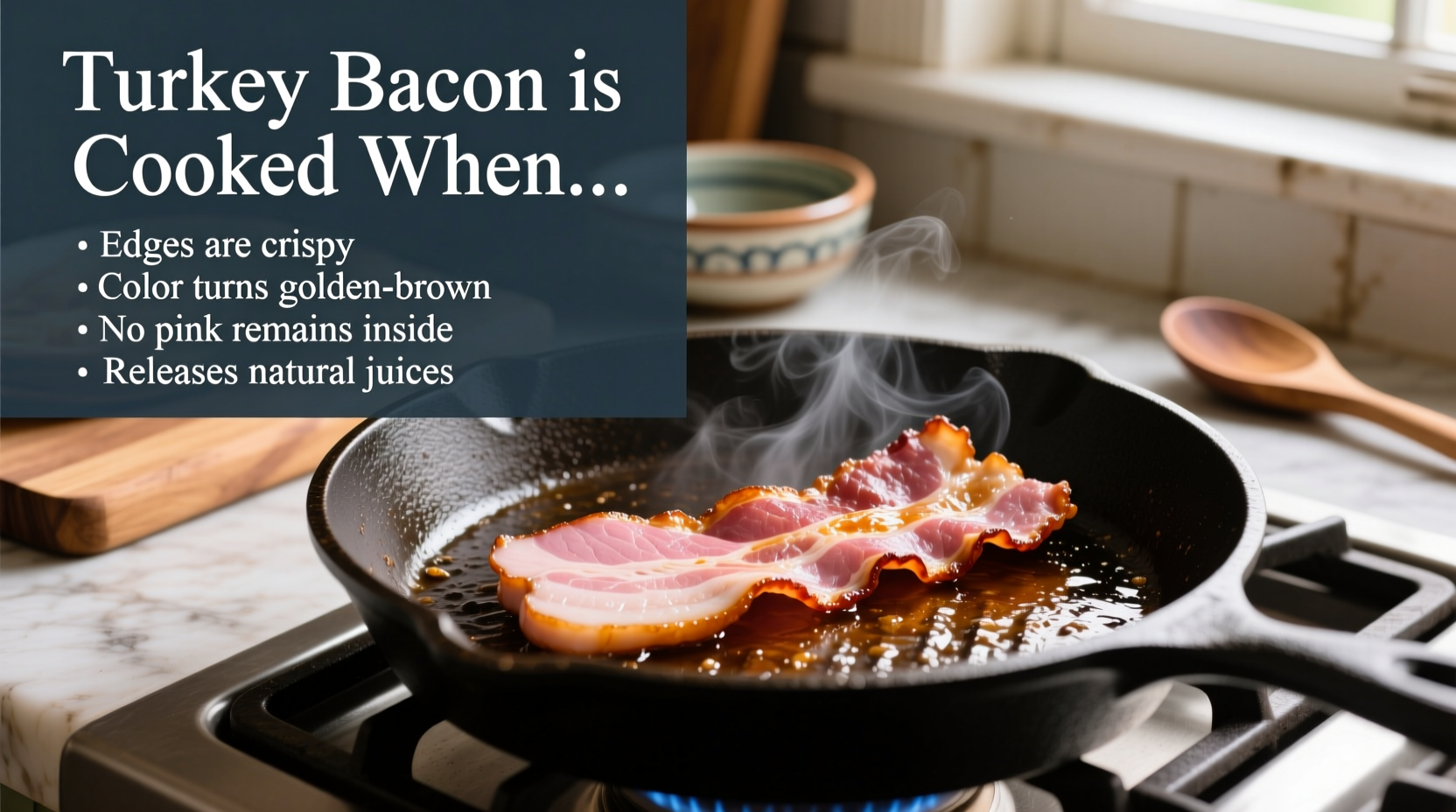Knowing exactly when turkey bacon is properly cooked transforms your breakfast experience while keeping you safe from foodborne illnesses. This lean alternative to traditional pork bacon requires different cooking cues since it contains less fat and cooks more quickly. Getting it right means achieving that perfect balance of crispy texture without drying out the meat or risking undercooking.
Why Proper Cooking Temperature Matters for Turkey Bacon
Turkey is poultry, which means it carries different food safety requirements than pork products. The USDA Food Safety and Inspection Service clearly states that all poultry products, including turkey bacon, must reach a minimum internal temperature of 165°F (74°C) to eliminate harmful bacteria like salmonella and campylobacter. Unlike pork bacon which can be enjoyed at lower temperatures, turkey bacon requires this higher threshold for safety.
Visual and Textural Indicators of Perfectly Cooked Turkey Bacon
While a thermometer provides the most accurate measurement, experienced cooks rely on multiple sensory cues to determine doneness:
- Color transformation - Shifts from pale pink to golden brown, particularly at the edges
- Texture change - Transitions from soft and pliable to firm and slightly crisp
- Shrinkage - Reduces by 20-30% in both length and width as moisture evaporates
- Edge curling - Begins to curl slightly when nearly done
- Surface appearance - Develops a slightly glossy sheen as proteins denature
| Cooking Stage | Visual Appearance | Texture | Internal Temperature |
|---|---|---|---|
| Raw | Pale pink, translucent | Soft, flexible | Below 100°F (38°C) |
| Partially Cooked | Pink center, brown edges | Firm but bendable | 130-150°F (54-66°C) |
| Properly Cooked | Uniform golden brown | Crisp but not brittle | 165°F (74°C) |
| Overcooked | Dark brown, possibly blackened | Brittle, crumbly | Above 180°F (82°C) |
Temperature Guidelines for Different Cooking Methods
While the target temperature remains consistent at 165°F, cooking times vary significantly based on your method:
Stovetop Cooking (Most Common Method)
Cook turkey bacon over medium heat for 6-10 minutes, flipping occasionally. Start checking temperature at 6 minutes since cooking happens quickly. The USDA recommends using a food thermometer to verify doneness, especially since visual cues alone can be misleading with leaner turkey bacon.
Oven Baking
Arrange bacon on a wire rack over a baking sheet at 400°F for 12-15 minutes. The elevated position allows heat to circulate evenly, preventing steaming. Check at 12 minutes as oven temperatures vary.
Air Fryer Method
At 375°F, cook for 8-10 minutes, shaking the basket halfway through. Air fryers cook turkey bacon exceptionally quickly due to concentrated heat circulation.

Avoiding Common Turkey Bacon Cooking Mistakes
Many home cooks encounter these frequent issues when preparing turkey bacon:
Undercooking Risks
Turkey bacon that hasn't reached 165°F poses a food safety hazard. Unlike pork bacon which can be enjoyed at lower temperatures, undercooked turkey products may contain harmful bacteria. The Centers for Disease Control and Prevention reports that proper cooking temperature is the most reliable method to eliminate pathogens in poultry products.
Overcooking Problems
Turkey bacon's lower fat content means it dries out faster than pork bacon. Overcooked turkey bacon becomes tough, chewy, and develops an unpleasant rubbery texture. When the internal temperature exceeds 180°F, the proteins become excessively denatured, resulting in diminished quality.
Uneven Cooking
Because turkey bacon slices often vary in thickness, some pieces may cook faster than others. Arrange similar thickness slices together and rotate positions during cooking for more uniform results.
Pro Tips for Perfect Turkey Bacon Every Time
Professional chefs recommend these techniques for optimal results:
- Start with cold bacon from the refrigerator for more even cooking
- Use medium heat rather than high to prevent burning before reaching safe temperature
- Pat bacon dry with paper towels before cooking to improve browning
- Let cooked bacon rest for 1-2 minutes on a wire rack to maintain crispness
- For extra crispiness, finish under the broiler for 30-60 seconds
Storing and Reheating Cooked Turkey Bacon
Proper storage maintains quality and safety:
- Refrigerate cooked turkey bacon within 2 hours in an airtight container
- Consume within 4 days for best quality
- Reheat in a dry skillet over medium heat for 1-2 minutes per side
- Alternatively, reheat in a 350°F oven for 5-7 minutes
- Freeze cooked turkey bacon for up to 3 months in freezer-safe packaging
Frequently Asked Questions
Here are answers to common questions about cooking turkey bacon:
How long does it take to cook turkey bacon on the stove?
On medium heat, turkey bacon typically takes 6-10 minutes to cook thoroughly. Start checking at 6 minutes since cooking happens quickly due to lower fat content. Flip occasionally for even browning and use a thermometer to verify it reaches 165°F internally.
Can turkey bacon be a little pink when fully cooked?
No, properly cooked turkey bacon should not remain pink. While some cured pork products may retain pink color after cooking, turkey bacon must reach 165°F throughout, which eliminates pink coloring. Any pink areas indicate undercooking and potential food safety risks.
Why does my turkey bacon stick to the pan?
Turkey bacon sticks because of its lower fat content compared to pork bacon. To prevent sticking, preheat your pan properly before adding bacon, use medium rather than high heat, and avoid moving the bacon too soon. A well-seasoned cast iron or quality non-stick pan works best for cooking turkey bacon.
Is it safe to eat turkey bacon that's still flexible?
Flexibility alone doesn't indicate safety. Turkey bacon must reach 165°F internally regardless of texture. Undercooked flexible turkey bacon may contain harmful bacteria. Use a thermometer to verify temperature rather than relying solely on texture, as turkey bacon can remain somewhat flexible even when properly cooked due to its lean nature.
How can I make turkey bacon crispy without burning it?
Cook turkey bacon over medium heat rather than high, flipping occasionally. Start checking at 6 minutes and remove when golden brown with slightly crisp edges. For extra crispiness, finish under the broiler for 30-60 seconds. Patting the bacon dry before cooking and using a wire rack in the oven also helps achieve crispness without burning.











 浙公网安备
33010002000092号
浙公网安备
33010002000092号 浙B2-20120091-4
浙B2-20120091-4